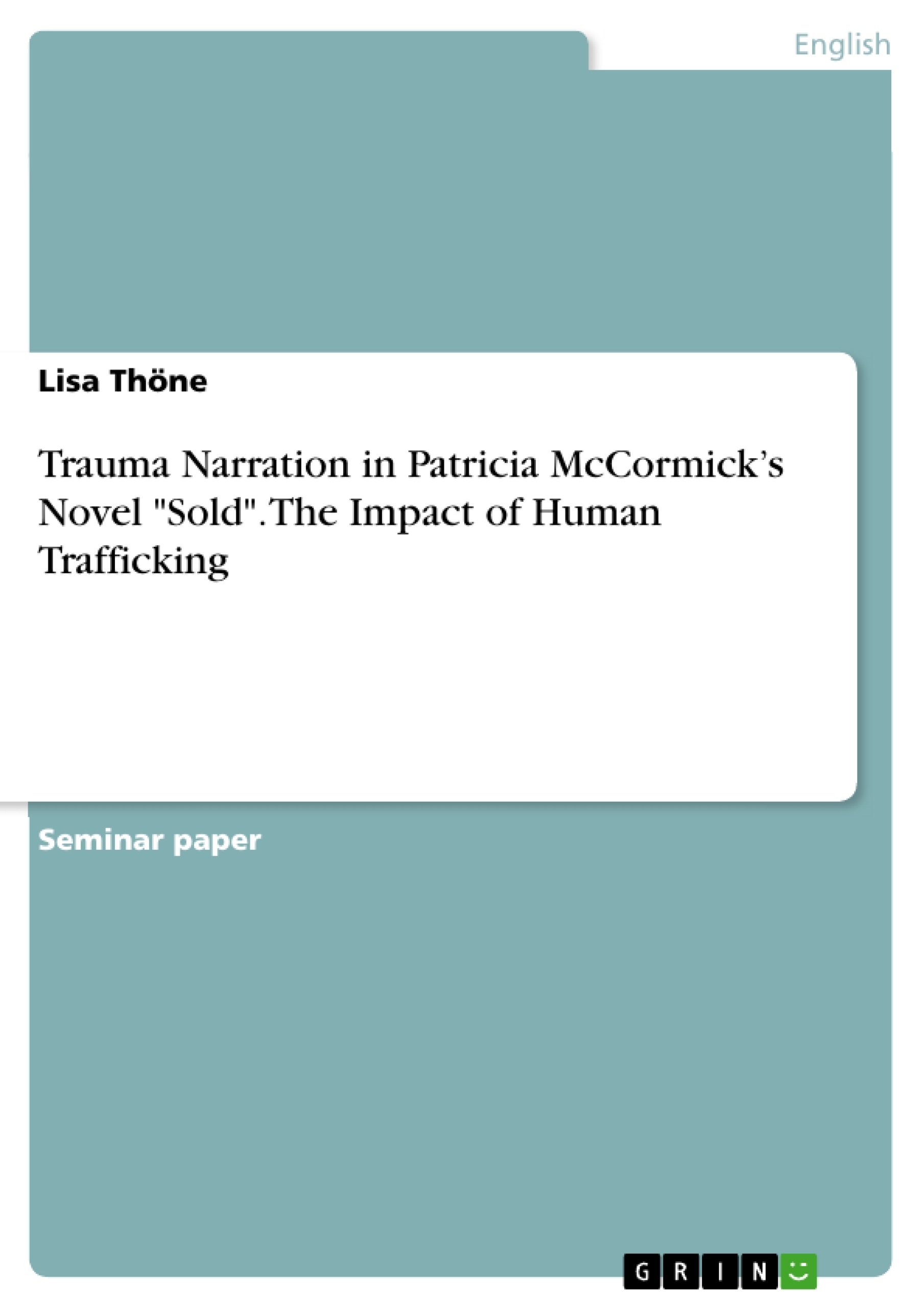This paper analyzes Patricia McCormick's novel "Sold" to explore how it captures the experiences of trauma resulting from human trafficking. The paper examines the novel's narrative techniques, the protagonist Lakshmi's emotional journey, and the creation of reader empathy. It demonstrates how "Sold" fulfills the key functions of a trauma narrative.
For the analysis part, this paper examines which functions of Laurie Vickroy’s theory of trauma narratives Patricia McCormick fulfills in her novel Sold. During the course, the role of Lakshmi’s language, which reveals the development of her thoughts and feelings, the impact of people accompanying her on her journey, as well as the aspect of creating reader empathy, will shape the discourse. Weighing everything up, the paper will arrive at a conclusion. In so doing, the overall purpose is to prove that Sold fulfills all of the three main functions of a trauma narrative by Laurie Vickroy because other characters either enhance or reduce the traumatic experience, Lakshmi's trauma is dependent on numerous aspects that interplay during the novel, and the reader is bound to the traumatic experience.
Table of Contents
- Introduction
- Background / Theory Chapter
- Analysis
- The influences of the other characters on Lakshmi's trauma
- How the narrative structure reveals the dynamic of the trauma process and creates reader empathy
- Conclusion
Objectives and Key Themes
This paper examines Patricia McCormick's novel "Sold" to analyze its function as a trauma narrative, focusing on the experiences of a young girl trafficked from Nepal to India. The paper explores the author's purpose in writing the novel and how trauma narratives function in contemporary fiction, drawing on the theory of Laurie Vickroy. The analysis delves into the narrative techniques employed by McCormick to depict the protagonist's emotional and psychological journey.
- The impact of human trafficking on the protagonist's trauma
- The narrative techniques employed to depict trauma
- The role of other characters in shaping the protagonist's experience
- The creation of reader empathy through narrative structure
- The application of Laurie Vickroy's theory of trauma narratives in contemporary fiction
Chapter Summaries
The introduction provides a brief overview of the novel "Sold" and introduces the concept of trauma narratives. It highlights the importance of understanding how trauma is experienced and portrayed in literature. The "Background / Theory Chapter" delves into the context of human trafficking from Nepal to India, exploring the social and political factors that contribute to this issue. It also introduces the theoretical framework of Laurie Vickroy, focusing on her analysis of the functions of trauma narratives in contemporary fiction. The analysis section delves into specific aspects of the novel, examining how other characters influence the protagonist's trauma, how the narrative structure reveals the dynamics of the trauma process, and how the story creates reader empathy.
Keywords
The main keywords and focus topics of the text include: trauma narratives, human trafficking, Nepal, India, narrative structure, reader empathy, Laurie Vickroy, contemporary fiction, "Sold", Patricia McCormick. These keywords encapsulate the primary themes, concepts, and research focuses of the work, providing a comprehensive overview of its scope and content.
- Quote paper
- Lisa Thöne (Author), 2020, Trauma Narration in Patricia McCormick’s Novel "Sold". The Impact of Human Trafficking, Munich, GRIN Verlag, https://www.grin.com/document/1477005




